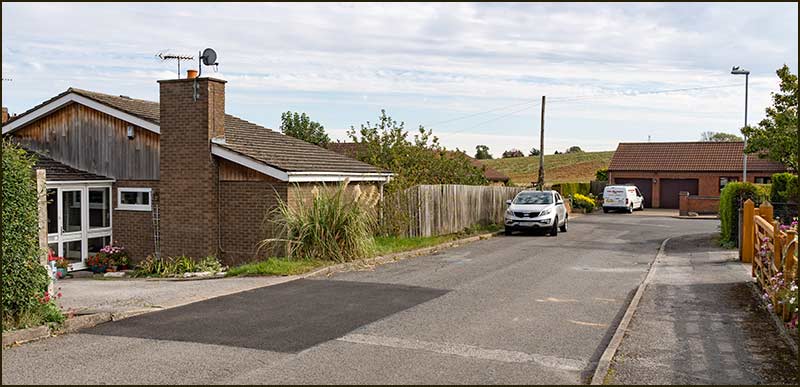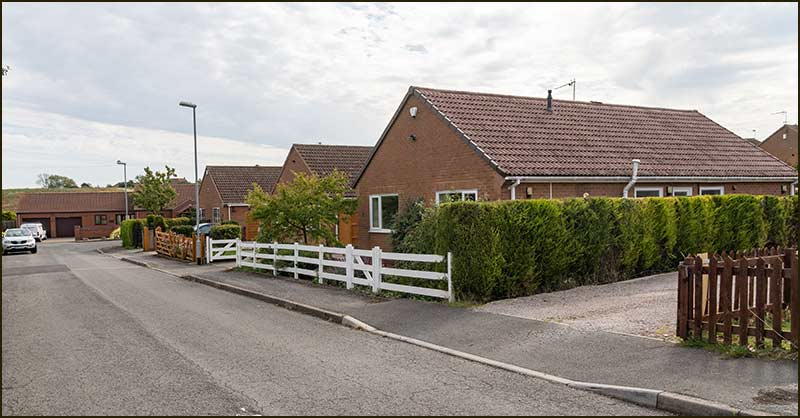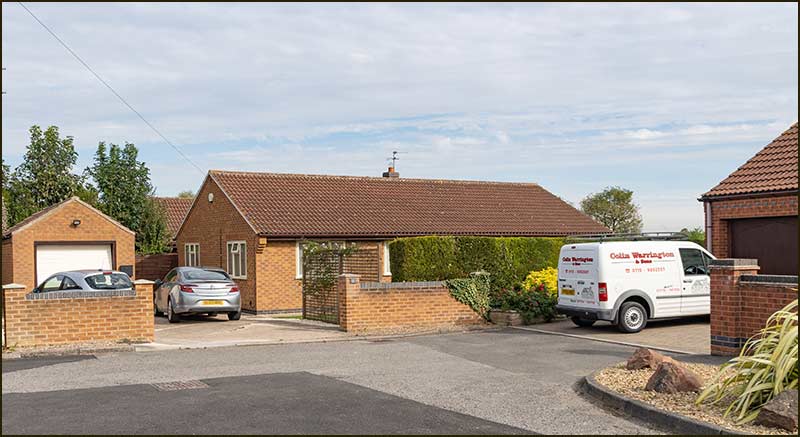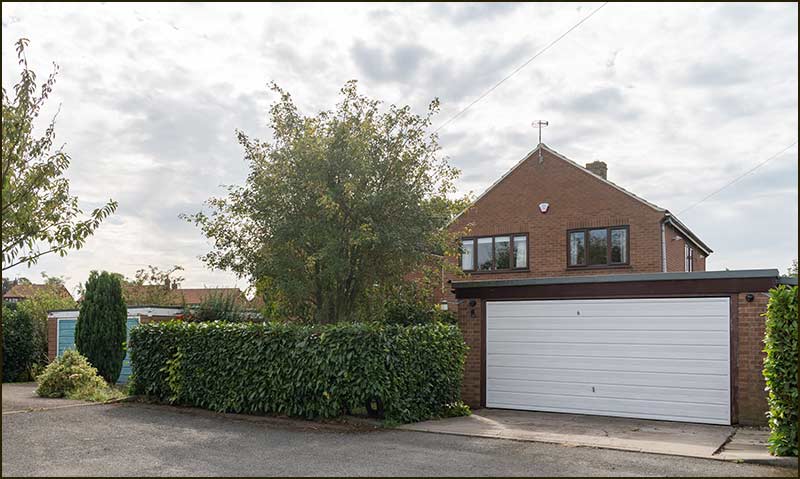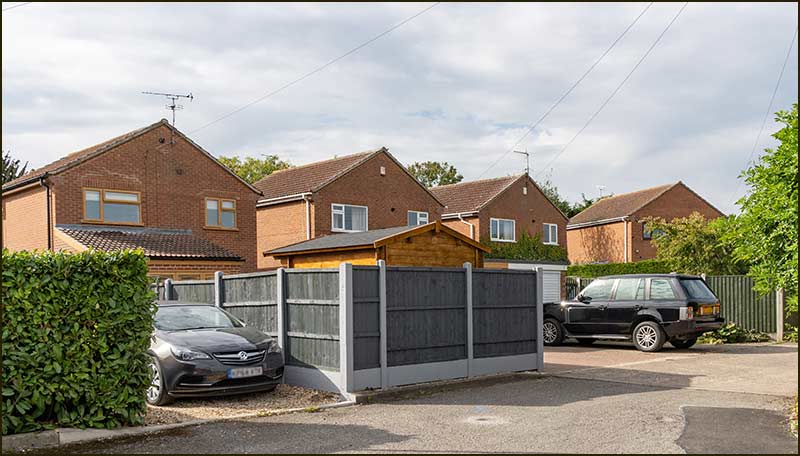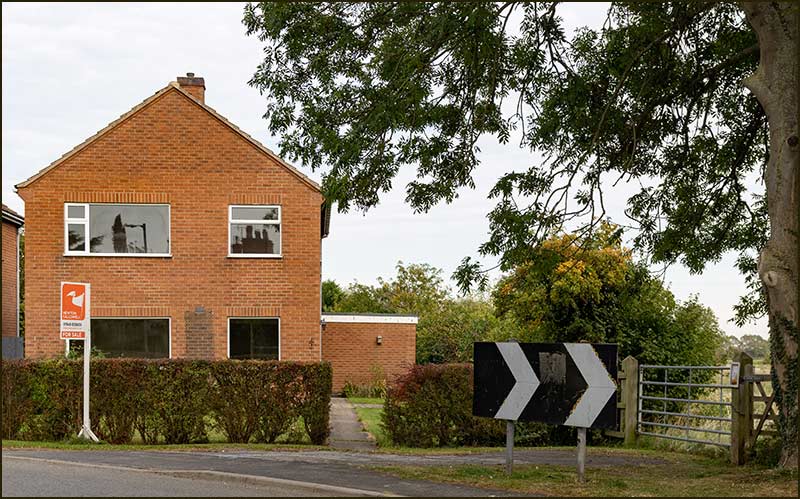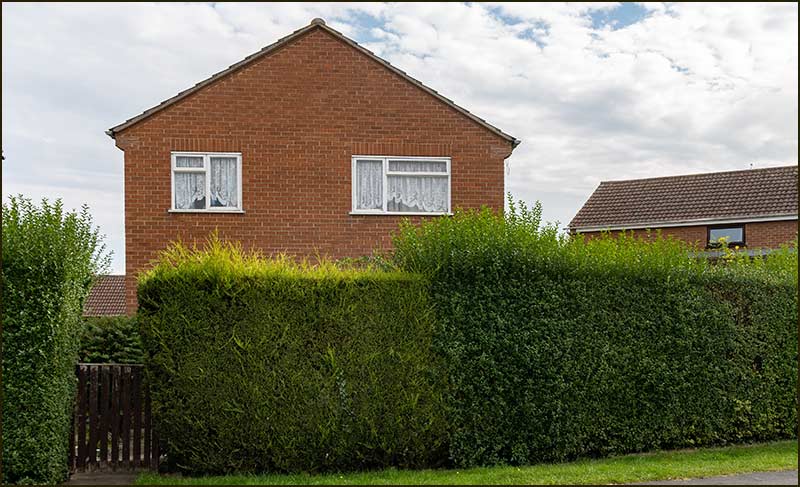Cropwell Bishop Streets: — Hardy's Close (10-02-21)

Most of the homes on Hardy’s Close were built around 1976: the remaining ones in the 1980s. Prior to this, much of the land had been occupied by Etheldene Cottages (see Etheldene Street Story).

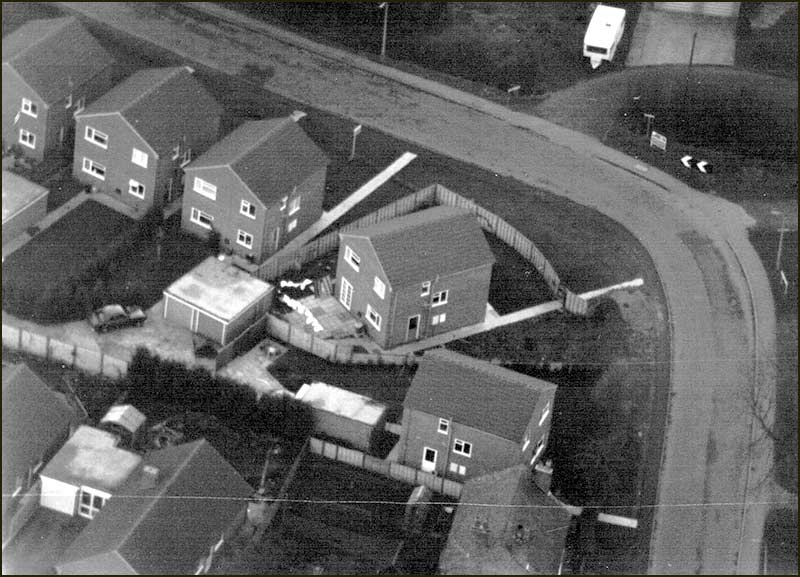
The name of the street implies a connection to a member of the Hardy family but it is unusual in that it does not refer to a major landowner from earlier times.
Thankfully, research does reveal a connection between a Hardy family and the land now occupied by Hardy’s Close.
Etheldene Cottages were not always called that, before the 1930s they were known as Salvin’s Row. We know that in 1881, James Hardy, who was from Norwich, was living on Salvin’s Row with his wife Emma and their daughter Elizabeth. James and Emma had married in 1877. James worked as an agricultural labourer.
A second, older, daughter was part of the family, 7-year-old Mary Cluro who was born in 1873 – 4 years before Emma married. Emma’s maiden name was Cluro which implies that young Mary was born to Emma and had a different, unknown, father.
Over the following decades the Hardy family grew in size and by 1901 there were 10 children.
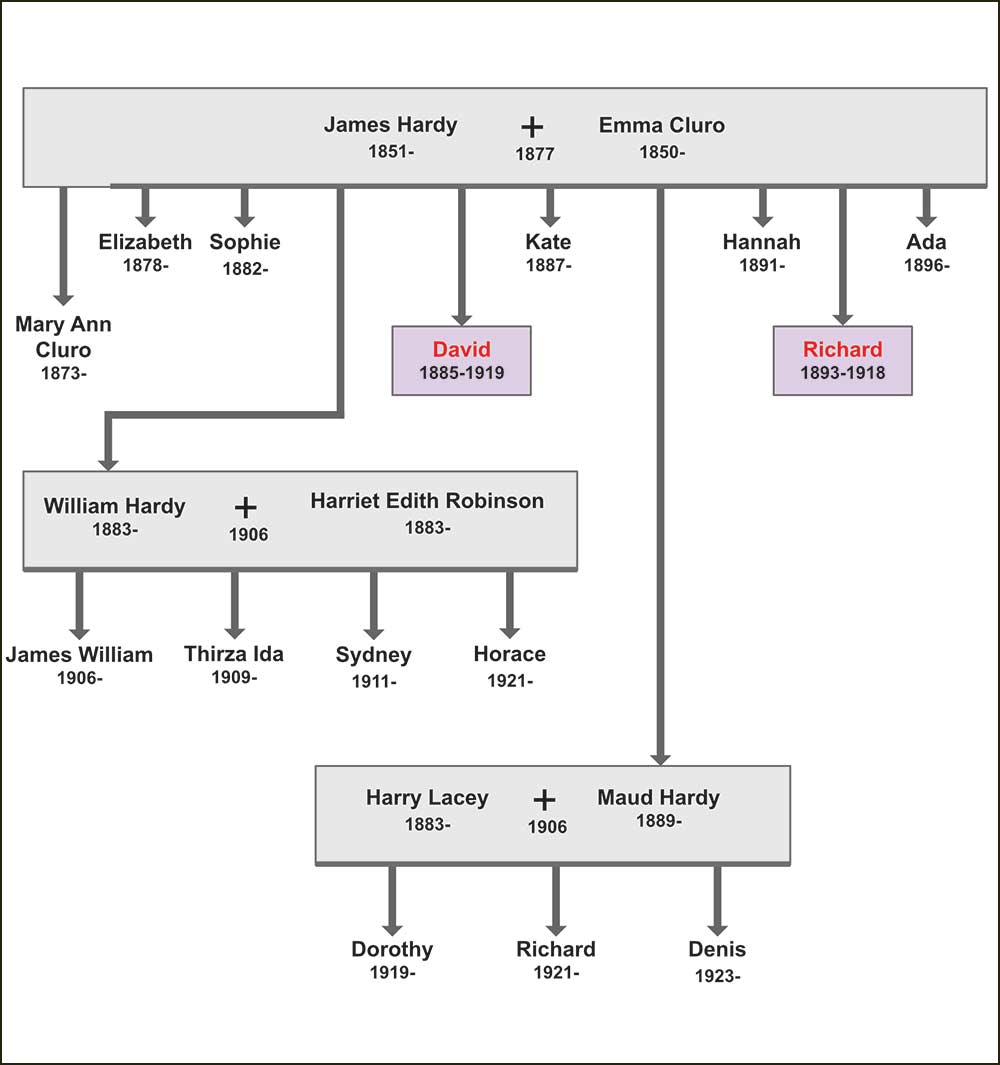
The family home was still on Salvin’s Row but the older children had left home and 14-year-old Kate was living with her Grandmother Cluro, three doors away on Salvin’s Row.
That meant that James and Emma were sharing their home with just 5 of their children, aged from 5 to 18. For a house with just two bedrooms, that seems scandalous by today’s standards, but in 1901, it was probably deemed acceptable, and was far from unusual in "2 up and 2 down" cottages.
Ten years later, in 1911, James and Emma only had two of their sons living with them; 24-year-old David and 18-year-old Richard. The two boys were working in the “Gypsum Pit” in Cropwell Bishop. Their father, James, was still working as an agricultural labourer.
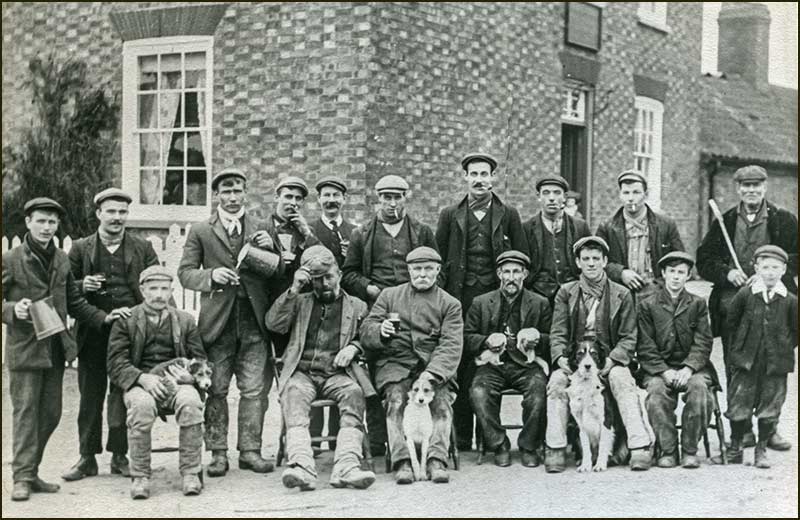
The photo has the title, "Gypsum miners going rabbiting when the mine was flooded".
(1908)
Their oldest son, 27-year-old William, had married Edith from South Normanton and they had 3 children. If ever they needed a babysitter, they shouldn't have had a problem; they lived next door to William's parents, James and Emma.
So, we can see that the Hardy’s had a dominant presence on Salvin’s Row during the late 1800s and early 1900s, but that, surely, wasn’t reason enough for Parish Councillors to name a road after one of them 60 years later. Especially when the National Register of 1939, shows no-one with the name of Hardy living in Cropwell Bishop.
The choice of “Hardy” looks baffling, but it can be explained.
In 1911, David and Richard may have looked forward to many years of work in the thriving Cropwell Bishop Gypsum Mines but, just 3 years later, world events would change everything, for everyone: World War One began.
In 1915, 21-year-old Richard joined the Army. He joined the South Notts Hussars but later transferred to the Machine Gun Corps.
His brother David was 9 years older than him and he also joined the Army but there is no record of when that was. He was in the Army Service Corps. Richard and David would not see each other again – ever.
In 1918, on the 30th October, Richard died of disease at the hospital in Alexandria – just 12 day before 11th November and the end of the War. He is listed as having died in the “Egyptian Theatre of War”: he was 25 years old.

The title of this photo is, "Young men going for a Sunday walk" (1912)
David Hardy survived the Great War (as the 1914-18 War was called until 1939), and in February 1919 he was demobilised and returned to Nottingham. However, just 3 weeks later, he died of pneumonia. He was 34 years old and is buried at New Basford cemetery.
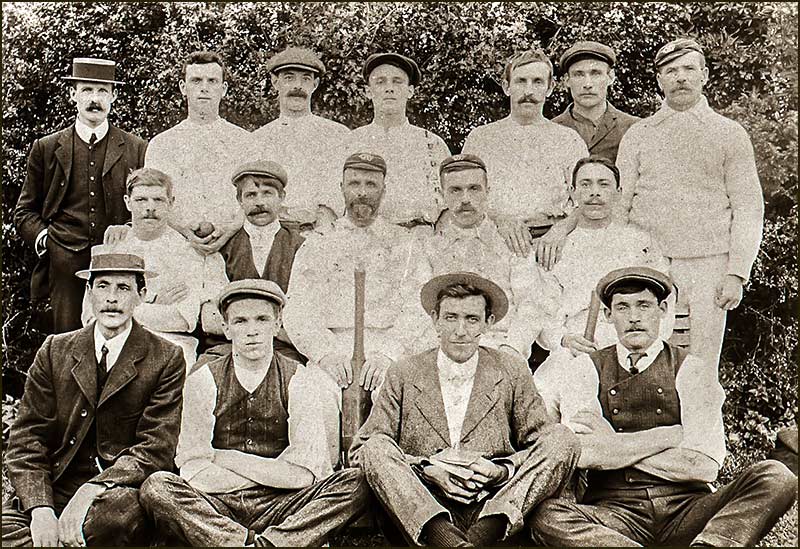
David Hardy did not die during the Great War or whilst he was in the Army, but he did die as a consequence of his War Service. His name appears on the memorial plaque in the Old School as one who "Died After Discharge".
I had been baffled by the choice of name for Hardy’s Close, but now I understand the thinking of Parish Councillors.
The extended Hardy family had multiple connections with Etheldene Cottages which stood on the land now occupied by the Close, and two of their young men had died as a result of volunteering for the Army in the Great War of 1914-18. They would not have wanted to die but the fact is they did.
The apostrophe in "Hardy's Close" is significant. Had there been no apostrophe, I would have said the street name referred to the two sons, Richard and David. But the street name refers to one Hardy member and I have little doubt that it is dedicated, primarily, to the memory of Richard Hardy.
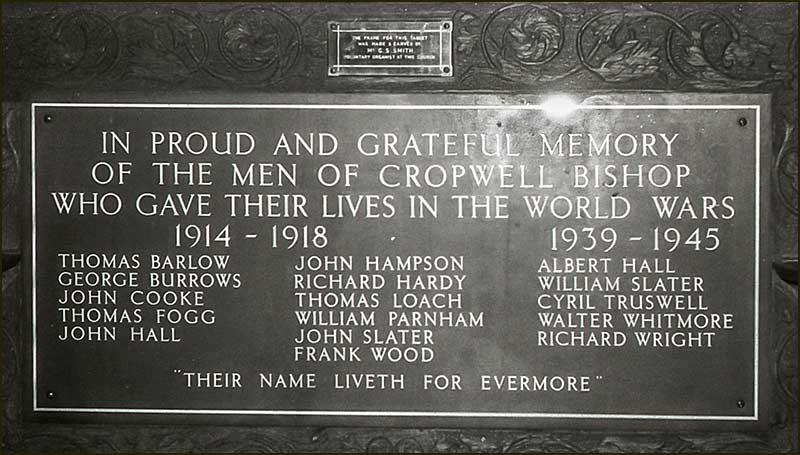
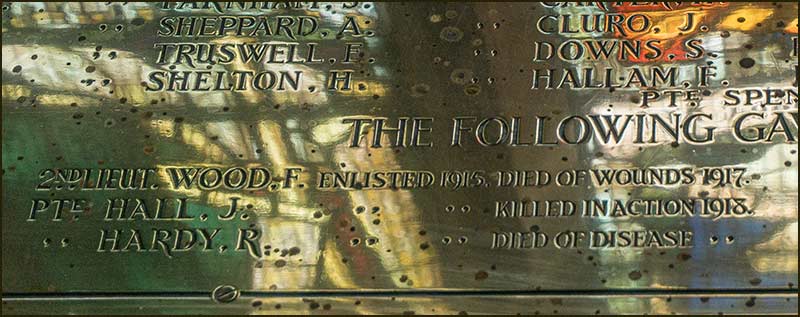

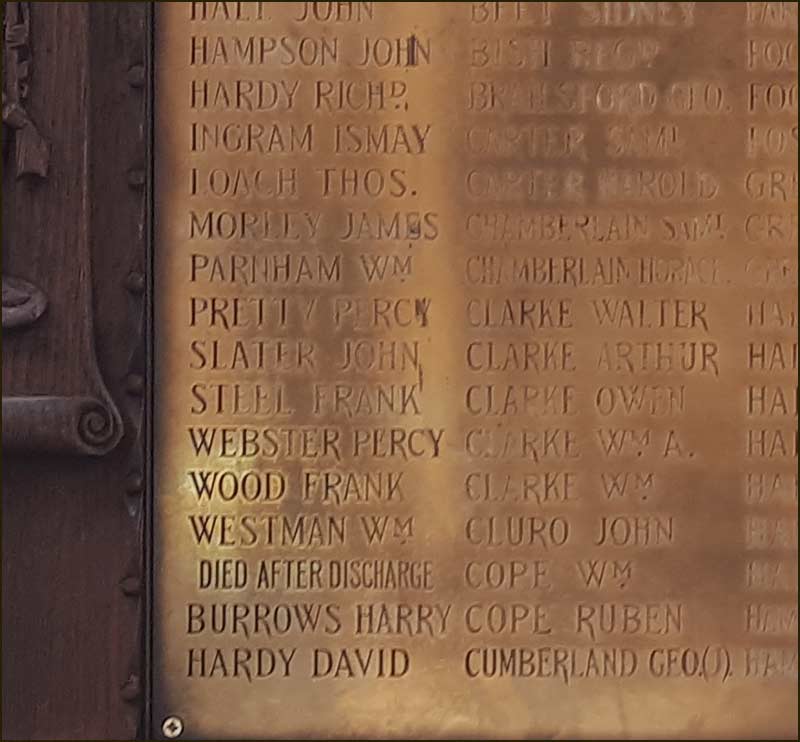
I had wondered why there were no Hardys living in Cropwell Bishop in 1939 – more so when I discovered how big the family was in 1911. However, the explanation is quite simple.
Of Emma Hardy’s 10 children, 7 were girls. When a woman married, she gave up her maiden name – illogical, maybe, but true.
So, those Hardy women who married, abandoned their family name, and those who didn’t marry, wouldn't pass it on – unless they did so by having children out of wedlock which, even in those days, was not as rare as you might think. Emma Cluro's daughter is an example and there are more in other Cropwell Bishop Street Stories.
As for the 3 boys of Emma Hardy, well as we have seen, two died from the Great War and had not married. However, the eldest, William did marry and have children and the family lived next door to his parents.
In 1911, William was 28-years-old and a blacksmith’s striker. As the name implies, he wielded the hammer for the village blacksmith – a task that was often performed by the apprentice to a blacksmith.
William was probably looking to become a blacksmith himself, and on the look-out for a workshop of his own. This would explain why he and his family were no longer in Cropwell Bishop in 1939: they had moved to another village.
Hardy's Close is neither a long street or an old one but, like all the streets in Cropwell Bishop, there lies an interesting story behind its name.
Tony Jarrow
Note:
Thanks to Anne Terzza, Pam Barlow, Jacques Lacey and Pat Onions for their help with this article.
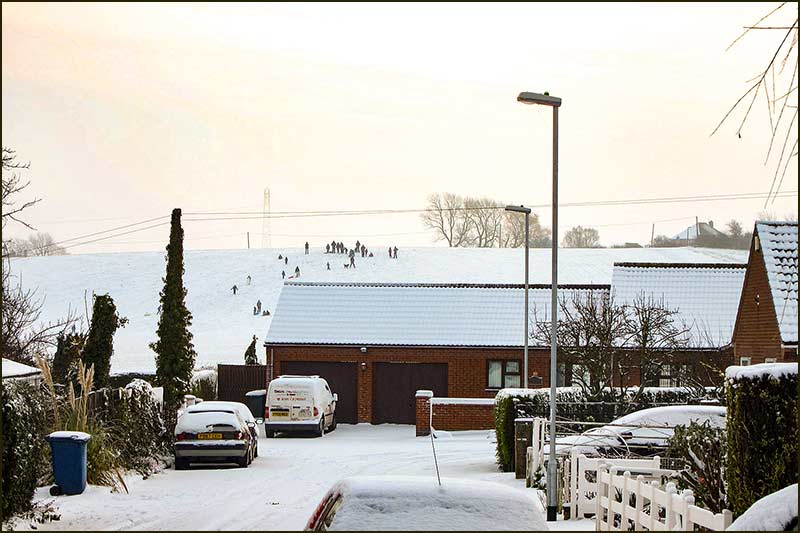
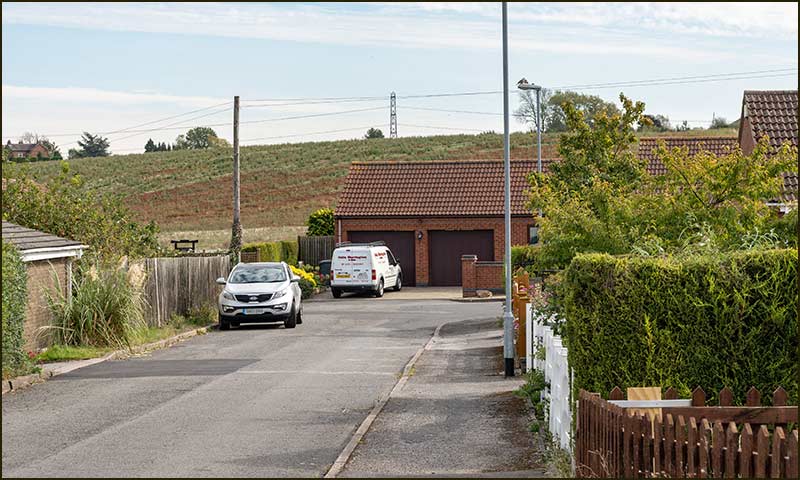
.jpg)
Maud married Harry Lacey from Cotgrave in 1915 when she was 26 years old.
(1914 approx)
It is 115mm high and belonged to Maud Hardy who probably used it when working outdoors. Around 100 years old.
Photo by Maud's grandson, Jacques Lacey.

Hardy's Close in 2020
